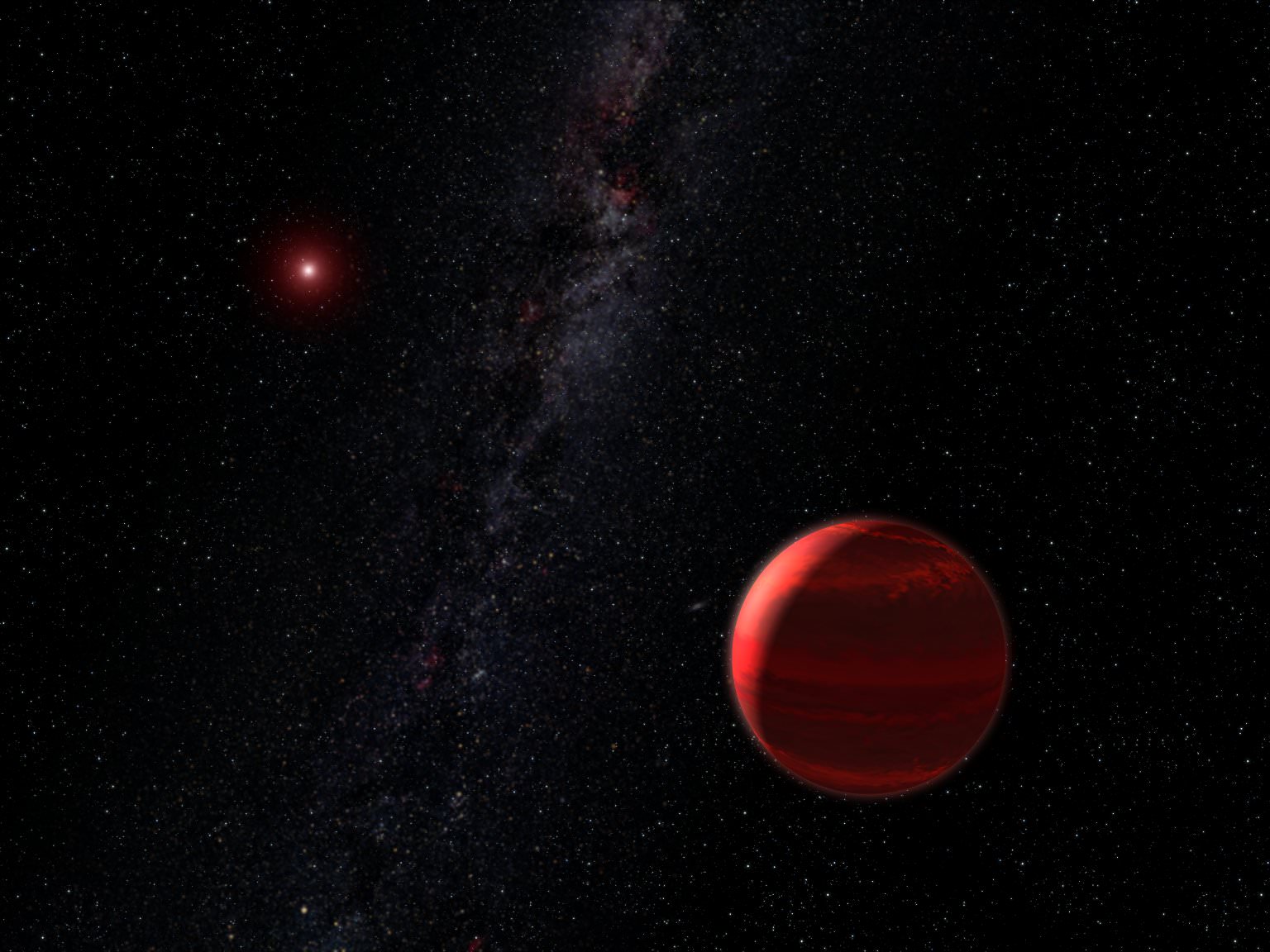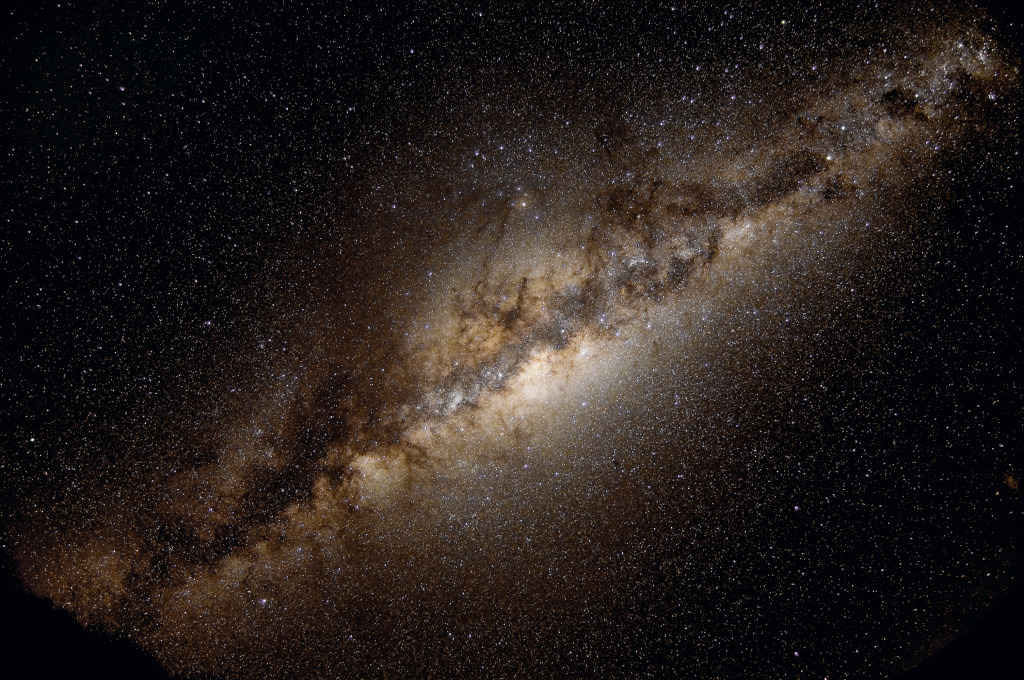I know for a fact it’s one of the most annoying things that can happen. I’ve done it lots; whether that be out at night with telescope or a bit of DIY but for sure it has to rate as one of the most frustrating things to happen. I am talking of dropping something you are using. Ranking high is dropping tools while you are actually using them.. Dropping a tool is one thing but imagine dropping an entire bag of tools, while in orbit!!!! Oops!
Continue reading “Oops. Astronauts Lost a Tool Bag During a Spacewalk!”Searching for the Supernova Neutrino Background to the Universe
It’s a sobering statement that stars like the Sun, more accurately ALL stars will die eventually, yes even the Sun! Don’t panic though, we still have a good few billion years to go so you will get to the end of this article. The more massive stars die as the dramatic supernovae explosions and when they do, they send a burst of neutrinos across the Universe. Astronomers now think it’s likely there is a background of neutrinos across the cosmos and that one day we will be able to map the historical distribution of supernova explosions, may be even by 2035.
Continue reading “Searching for the Supernova Neutrino Background to the Universe”Can There Be Double Gravitational Lenses?
If you, like me, have used telescopes to gaze out at the wonders of the Universe, then you too may have been a little captivated by the topic of gravitational lensing. Think about it: how cool is it that the very universe we are trying to explore is actually providing us with telescopes to probe the darkest corners of space and time?
The alignment of large clusters of galaxies is the usual culprit whose gravity bends distant light to give us nature’s own telescopes, but now part-time theoretical physicist Viktor T Toth poses the question, “Can there be multiple gravitational lenses lined up and can they provide a ‘communication bridge’ to allow civilisations to communicate?”
Continue reading “Can There Be Double Gravitational Lenses?”The Crab Reveals Its Secrets To JWST
The Crab Nebula – otherwise known as the first object on Charles Messier’s list of non-cometary objects or M1 for short – has never really failed to visually underwhelm me! I have spent countless hours hunting down this example of a supernova remnant and found myself wondering why I have bothered. Yet here I am, after decades of looking at it, and I still find it one of the most intriguing objects in the sky.
Never has this interest been piqued more than right now after another mirror-smashing beauty of an image from the James Webb Space Telescope, and it’s already found its way to my mobile phone wallpaper!
Continue reading “The Crab Reveals Its Secrets To JWST”In Case of Jerusalem Video, UFO Could Mean “Unidentified Flashlight Objects”
UFO’s are tricky little blighters. Those three letters have caused so much controversy over the years and I find myself, yet again, discussing one of the most misrepresented acronyms in the entire Universe. UFO stands for ‘Unidentified Flying Object’ and, if you have never seen a helicopter before, then its a UFO, its unidentified and flying! Forgive me then when I saw the news on January 28, 2011 of yet another UFO sighting and cries of alien visitors as if it were obvious. Well stop right there…..
Continue reading “In Case of Jerusalem Video, UFO Could Mean “Unidentified Flashlight Objects””
Planck Unveils the Wonders of the Universe
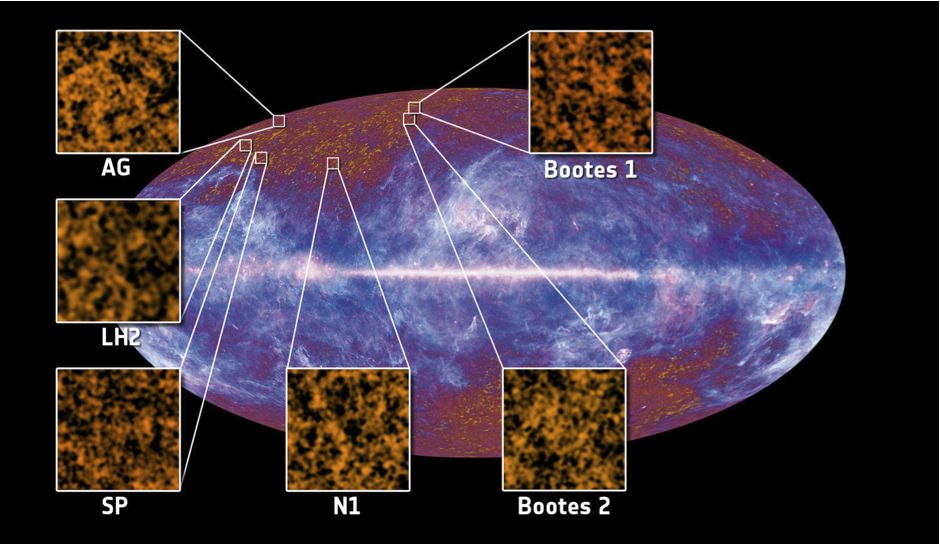
[/caption]
The mission began on 13th August 2009 with a goal to image the echo’s of the birth of the Universe, the cosmic background radiation. But scientists working on the European Space Agency’s (ESA) Planck mission got more than they bargained for making ground breaking discoveries and shedding light on old mysteries. By studying light from the far reaches of the Universe, Planck has to look through the rest of the Universe first and it was during this, that the incredible discoveries were made.
The crazy thing about looking at the far reaches of the Universe is that we actually look back in time as it takes billions of years for the light to reach us here on Earth. This enables astronomers to look back in time and study the evolution of the Universe almost back to the Big Bang itself. Amongst the discoveries was evidence for an otherwise invisible population of galaxies that seem to be shrouded in dust billions of years in the past. Star formation rates in these galaxies seem to be happening at an incredible pace, some 10-1000 times higher than we see in our own Milky Way galaxy today. Joanna Dunkley, of Oxford University, said “Planck’s measurements of these distant galaxies are shedding new light on when and where ancient stars formed in the early universe”.
One of the challenges of getting a clear view of these galaxies though has been removing the so called ‘anomalous microwave emission’ (AME) foreground haze. This annoying and poorly understood interference, which is thought to originate in our own Galaxy, has only just been pierced through with Planck’s instruments. But in doing so, clues to its nature have been unveiled. It seems that the AME is coming from dust grains in our Galaxy spinning several tens of billions of times per second, perhaps from collisions with incoming faster-moving atoms or from ultra-violet radiation. Planck was able to ‘remove’ the foreground microwave haze, leaving the distant galaxies in perfect view and the cosmic background radiation untouched.
Its also the ideal instrument to detect very cold matter in the form of dust in our Galaxy and beyond, thanks to its broad wavelength coverage. During its study, it detected over 900 clumps of cold dark dust clouds which are thought to represent the first stages of star birth. By studying a number of nearby galaxies within a few billion light years, the study shows that some of them contain much more cold dust than previously thought. Dr David Clements from Imperial College London says “Planck will help us to build a ladder connecting our Milky Way to the faint, distant galaxies and uncovering the evolution of dusty, star forming galaxies throughout cosmic history.”
These results make Planck a roaring success but it doesn’t stop there. Other results just published include data on galaxy clusters revealing them silhouetted against the cosmic microwave background. These clusters contain thousands of individual galaxies gravitational bound together into gigantic strings and loops.
The Planck mission, which was in development for 15 years is already providing some ground breaking science in its first few years of operation and its exciting to wonder what we will see from it in the years that lie ahead.
Mark Thompson is a writer and the astronomy presenter on the BBC One Show. See his website, The People’s Astronomer, and you can follow him on Twitter, @PeoplesAstro
Stars Shrouded in Glittering Zirconium Light up the Sky
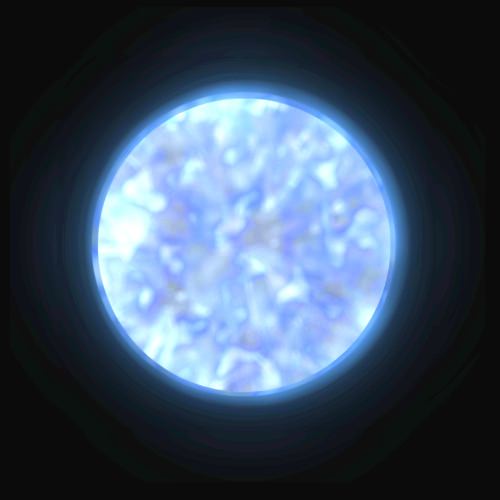
[/caption]
Its been said that the Universe isn’t stranger than you can imagine, its stranger than you can’t imagine. Nowhere is this more true than the study of stars. Recently, a team of scientists from the Armagh Observatory in Northern Ireland have discovered a star that is enveloped by clouds of glittering zirconium! Its a metal you might be more familiar with in jewelry to make false diamonds but it now looks like stars are getting in on the act and becoming more sparkly than they are already.
The research team, led by graduate student N. Naslim and her supervisor Dr. Simon Jeffrey, were looking for clues to the lack of hydrogen on the surface of helium rich hot subdwarf stars, when compared to other similar stars. Using the 3.9m Anglo-Australian telescope at Siding Spring Observatory in New South Wales, the study focused on a star called LS IV-14 116 which lies at an incredible distance of 2000 light years.
By using a spectroscope attached to the telescope, the team was able to split the incoming starlight into its component parts (much like water droplets in the atmosphere do to sunlight to make a rainbow). Along with the expected patterns which showed the presence of certain elements, they were surprised to find lines in the spectrum which were not so easily identified. A careful study showed the lines were due to the presence of a form of zirconium that should only exist in temperatures in excess of 20,000 degrees. This was a first, no zirconium of this type had ever been found in a stellar spectrum before.
Team member Prof. Alan Hibbert built a computer model that enabled them to deduce that the zirconium existing on LS IV-14 116 was some ten thousand times more than the concentration found in the Sun. This highly unexpected result led the team to conclude that the abundance of zirconium is caused by the formation of cloud layers in the star’s atmosphere.
“The star doesn’t have a corona like the Sun. Our model shows the huge excess of zirconium that we discovered is on the photosphere (the visible ‘surface’ of the star), where it forms cloud layers much like stratus clouds on Earth.” Naslim told Universe Today. It seems that other elements, chiefly metals heavier than calcium, seem to form in high concentrations too but seem scarce in layers above and below. This could have a dramatic effect according to Dr. Natalie Behara from the Université Libre de Bruxelles appearing as many thin cloud layers in the atmosphere, each due to a different metal.
Further work from the team suggests that the star is shrinking from a bright cool giant to a faint hot subdwarf and as it does, different elements sink or float up in the atmosphere making the current composition very specific to the star’s recent history.
Naslim explains that “The huge excess of zirconium was a complete surprise. We had no reason to think this star was more peculiar than any other faint blue star discovered so far.” Its great to see that whilst we know so much about the Universe now, there are still discoveries that come along and surprise us. This latest discovery of zirconium rich stars has yet again shown us that we mustn’t become complacent and think we know everything, it keeps science interesting, it keeps it alive.
Source: from the Royal Astronomical Society.
Mark Thompson is a writer and the astronomy presenter on the BBC One Show. See his website, The People’s Astronomer, and you can follow him on Twitter, @PeoplesAstro
Red Dwarf Discovery Changes Everything!
[/caption]
Its often said that the number of grains of sand on Earth equals the number of stars in the Universe. Well it looks like a recent study by astronomers working at the Keck Observatory in Hawaii have found that its more like three times the number of grains of sand on Earth! Working with some of the most sophisticated equipment available, astronomers from Yale University have been counting the number of dim red dwarf stars in nearby galaxies which has led to a dramatic rethink of the number of stars in the Universe.
Red dwarfs are small, faint stars compared to most others and until now, have not been detected in nearby galaxies. Pieter van Dokkum and his team from Yale University studied eight massive elliptical galaxies between 50 and 300 million lights years from us and discovered that these tiny stars are much more bountiful than first thought. “No one knew how many of these stars there were,” said Van Dokkum. “Different theoretical models predicted a wide range of possibilities, so this answers a long standing question about just how abundant these stars are.”
For years astronomers have assumed that the number of red dwarfs in any galaxy was in the same proportion that we find here in the Milky Way but surprisingly the study revealed there are about 20 times more in the target galaxies. According to Charlie Conroy of the Harvard-Smithsonian Center who also worked on the project, “not only does this affect our understanding of the number of stars in the Universe but the discovery could have a major impact on our understanding of galaxy formation and evolution.” Knowing that there are now more stars than previously thought, this lowers the amount of dark matter (a mysterious substance that cannot be directly observed but its presence inferred from its gravitational influence) needed to explain the observed gravitational influence on surrounding space.
Not only has the discovery affected the amount of dark matter we expect to find but it also changes the quantity of planets that may exist in the Universe. Planets have recently been discovered orbiting around other red dwarf stars such as the system orbiting around Gliese 581, one which may harbour life. Now that we know there are a significantly higher number of red dwarfs in the Universe, the potential number of planets in the Universe has increased too. Van Dookum explains “There are possibly trillions of Earth’s orbiting these stars, since the red dwarfs they have discovered are typically more than 10 billion years old, so have been around long enough for complex life to evolve, its one reason why people are interested in this type of star.”
It seems then that this discovery, which on the face of it seems quite humdrum, actually has far reaching consequences that not only affect our view of the number of stars in the Universe but has dramatically changed our understanding of the distribution of matter in the Universe and the number of planets that may harbour intelligent life.
The new findings appear in the Dec. 1st online issue of the journal Nature.
Source: from the Harvard Smithsonian Center for Astrophysics.
Mark Thompson is a writer and the astronomy presenter on the BBC One Show. See his website, The People’s Astronomer, and you can follow him on Twitter, @PeoplesAstro
T-Dwarf Stars Finally Reveal Their Mysterious Secrets
[/caption]
Astronomers have recently discovered an exotic star system which has shed some light on the mass and age of one of the systems rare stellar components. Using data from World’s largest optical telescope, the Very Large Telescope (VLT) in Chile, the team has had a new insight into the properties of the unusual T-dwarf stars. Its believed there are around 200 of these stars in our Galaxy but this is the first one to be discovered as part of a binary star system which has given astronomers an extra special insight into their properties.
The system, that has been dubbed the ‘Rosetta Stone’ for T-dwarf stars, was studied by a team led by Dr Avril Day-Jones of the Universidad de Chile and included Dr David Pinfield of the University of Hertfordshire and other astronomers from the University of Montreal. They first identified the dwarf star, which has a temperature of around 1000 degrees compared to our Sun at 5500 degrees, in the UKIRT Infra-red Deep Sky Survey while searching for the coolest objects in the Galaxy. They found to their surprise, that the T-dwarf star was joined by a companion blue star, later revealed to be a cool white dwarf. The pair have now been given the ‘memorable‘ name of 1459+0857 A and B.
The binary system is the first of its type to be discovered as, whilst both types of stars have been identified individually, they have never been found gravitationally bound to one another. The two stars are about 0.25 light years apart (compared to our nearest star at just over 4 light years away) but despite the distance and the weak gravitational interaction between the stars, they remain in orbit and will do so until the two stars slowly fizzle out to a dark and cool death.
The T-dwarf stars are an exotic breed which lie on the border between a star and a planet, much like our own Solar System giant, the planet Jupiter. They are not massive enough for nuclear reactions to take place in the core so from their birth, they simply cool and fade. The presence of methane too is a pointer to their cool nature as it gets destroyed at higher temperatures and so is not found in fully fledged stars. The companion star, the white dwarf, is a star at the end of its life. When average stars like the Sun die, their outer layers will blow off into space, leaving behind a planetary nebula and a cooling, dying stellar core. With the new binary system, the white dwarf star lost a significant amount of matter and so its gravitational pull weakened, slowly increasing the distance between the two companions. The planetary nebula has long since dissipated and from looking at the white dwarf, we can tell that this weak, fragile system has existed for several billions of year.
The discovery of this binary system has allowed the team to test the physics of cool stellar atmospheres that exist on these strange, failed stars and to measure its mass and age, providing an opportunity for astronomers to study other low mass objects. “The discovery is an important stepping stone to improve astronomers ability to measure the properities of low-mass star like objects (brown dwarfs). ” Dr Pinfield told Universe Today. “Only be accurately measuring these properties will we be able to understand how these objects form and evolve over time. Brown dwarfs are just as numerous as stars in the Milky Way, but their nature is not yet well understood. As such, this new discovery is helping astronomers interpret an important but mysterious population of objects that are quite common in our Galactic backyard.”
Mark Thompson is a writer and the astronomy presenter on the BBC One Show. See his website, The People’s Astronomer, and you can follow him on Twitter, @PeoplesAstro
Twinkle Twinkle Little Missing Stars, How I Wonder Where you are?
[/caption]
‘Twinkle twinkle little star, how I wonder what you are?’ This nursery rhyme is one of the best loved around the World. For astronomers though, stars can be a bit more of a nightmare, not only in understanding their complex evolutionary processes but also and perhaps more simply, figuring out how many there are. Until now there has been a gross mismatch between the number of stars that are found within our galaxy, the Milky Way and the amount that astronomer think should be there. In short, where are the missing stars?
The Milky Way is joined by about 30 other galaxies that make up our local group of galaxies, including the Andromeda Galaxy and according to current theories there should be about 100 billion stars in each. The calculations are based on the rate of star birth in the Milky Way, about 10 new stars per year. But according to Dr Jan Pflamm-Altenburg of the Argelander Institute for Astronomy at the University of Bonn “Actually, it would give many more stars than we actually see” and therein lies the problem.
The recent study by Dr Pflamm-Altenburg and Dr. Carsten Weidner of the Scottish St. Andrews University suggests that perhaps the estimated rate of star birth being used to calculate the number of stars could simply be too high. With galaxies in our Local Group its relatively easy to just count the number of new stars that can be seen but for more distant galaxies, they are too far away for individual stars to be seen.
By studying the nearby galaxies, Pflamm-Altenburg and Weidner discovered that for every 300 young small stars, there seems to be one large massive new star and fortunately this seems to be universal. Due to the unique nature of the massive young stars, they leave a tell tail sign in the light of distant galaxies so even though they cannot be individually identified they can still be detected and the strength of the signal determines the number of massive stars. Multiply by the number of massive stars by this ratio of 300 and the actual rate of stellar birth can be calculated.
It seems though that this rate has varied over the history of the Universe and dependent on the amount of ‘space’ available in the vicinity of the star formation. If there is a baby boom in star formation then a higher number of heavies seem to form in a theory called ‘stellar crowding’. When stars form, they form as clusters rather than individual stars but it seems that the overall mass of the group is the same, regardless of how many star embryo’s there really are. When star birth is at a high rate, space can be limited so larger more massive stars tend to form compared to smaller stars.
Massive galaxies like this where star birth is booming are called “ultra-compact dwarf galaxies” (UCDs). Sometimes its possible in these galaxies that young stars can even fuse together to form larger stars so the large to small ratio can be around 1:50 instead of 1:300. This means we have been using the wrong figure and estimating far too high.
Using this new found figure, Pflamm-Altenburg and Weidner have recalculated the number of stars that ‘should’ be in a galaxy and compared to those that we can see and rather pleasantly, the numbers match! It seems that the conundrum of the missing stars that has been perplexing astronomers for decades has finally been resolved.
Source: University of Bonn

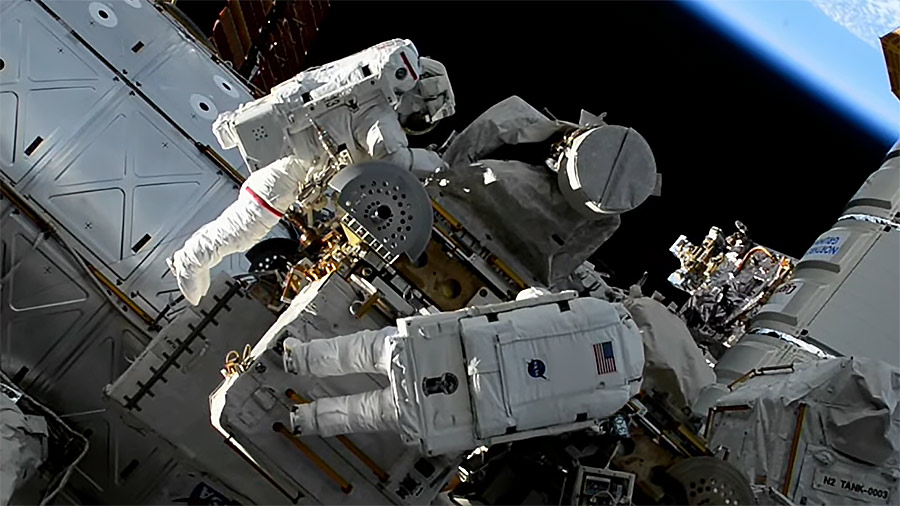


![The NASA/ESA/CSA James Webb Space Telescope has gazed at the Crab Nebula in the search for answers about the supernova remnant’s origins. Webb’s NIRCam (Near-Infrared Camera) and MIRI (Mid-Infrared Instrument) have revealed new details in infrared light. Similar to the Hubble optical wavelength image released in 2005, with Webb the remnant appears to consist of a crisp, cage-like structure of fluffy red-orange filaments of gas that trace doubly ionised sulphur (sulphur III). Within the remnant’s interior, yellow-white and green fluffy ridges form large-scale loop-like structures, which represent areas where dust particles reside. The area is composed of translucent, milky material. This material is emitting synchrotron radiation, which is emitted across the electromagnetic spectrum but becomes particularly vibrant thanks to Webb’s sensitivity and spatial resolution. It is generated by particles accelerated to extremely high speeds as they wind around magnetic field lines. The synchrotron radiation can be traced throughout the majority of the Crab Nebula’s interior. Locate the wisps that follow a ripple-like pattern in the middle. In the centre of this ring-like structure is a bright white dot: a rapidly rotating neutron star. Further out from the core, follow the thin white ribbons of the radiation. The curvy wisps are closely grouped together, following different directions that mimic the structure of the pulsar’s magnetic field. Note how certain gas filaments are bluer in colour. These areas contain singly ionised iron (iron II). [Image description: An oval nebula with a complex structure against a black background. On the oval's exterior lie curtains of glowing red and orange fluffy material. Interior to this outer shell lie large-scale loops of mottled filaments of yellow-white and green, studded with clumps and knots. Translucent thin ribbons of smoky white lie within the remnant’s interior, brightest toward its centre.]](https://www.universetoday.com/wp-content/uploads/2023/10/Crab-1-e1729890074152.jpeg)
